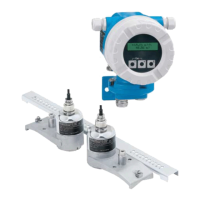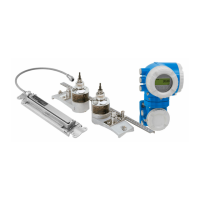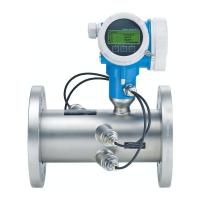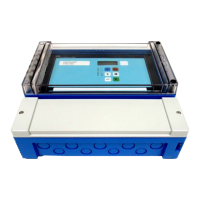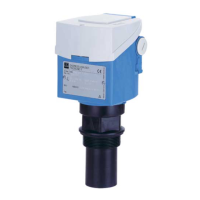Prosonic Flow 92 6 Commissioning
Endress+Hauser 43
6.2.4 Zero point adjustment
Zero point adjustment is generally not necessary.
Experience shows that zero point adjustment is advisable only in special cases:
• To achieve highest measuring accuracy even with very small flow rates.
• Under extreme process or operating conditions (e.g. high process temperatures or
very high viscosity fluids).
Preconditions for a zero point adjustment
Note the following before you perform a zero point adjustment:
• Zero point adjustment can be performed only with fluids that have no gas or solid
contents.
• Zero point adjustment is performed with the pipe completely filled and at zero flow
(v = 0 m/s). This can be achieved, for example, with shut-off valves upstream and/or
downstream of the measuring range or by using existing valves and gates (Fig. 34).
– Standard operation
→ valves 1 and 2 open
– Zero point adjustment with pump pressure
→ valve 1 open / valve 2 closed
– Zero point adjustment without pump pressure
→ valve 1 closed / valve 2 open
"
Caution!
• If the fluid is very difficult to measure (e.g. containing entrained solids or gas) it may
prove impossible to obtain a stable zero point despite repeated zero point
adjustments. In instances of this nature, please contact your E+H service centre.
• You can view the zero point value currently valid using the “Zeropoint Adjust” function
(see the “Description of device functions” appendix).
Fig. 34: Zero point adjustment and shut-off valves
F06-92xxxxxx-11-00-00-xx-000

